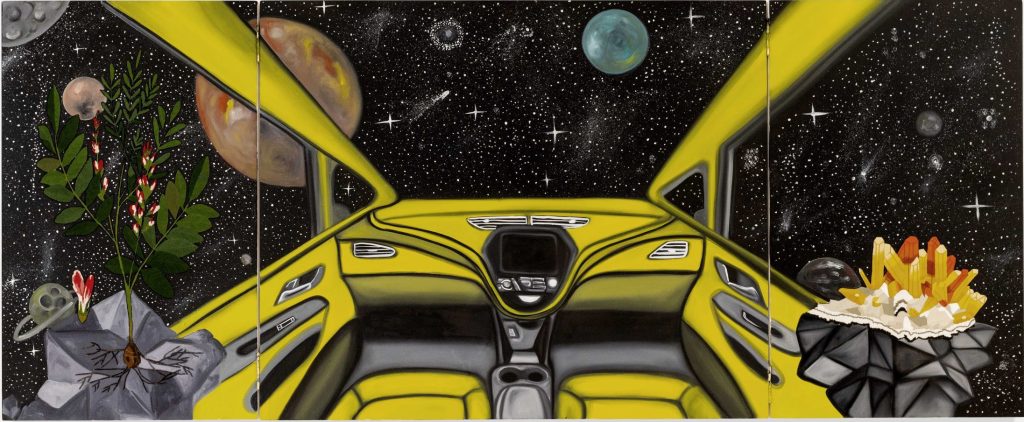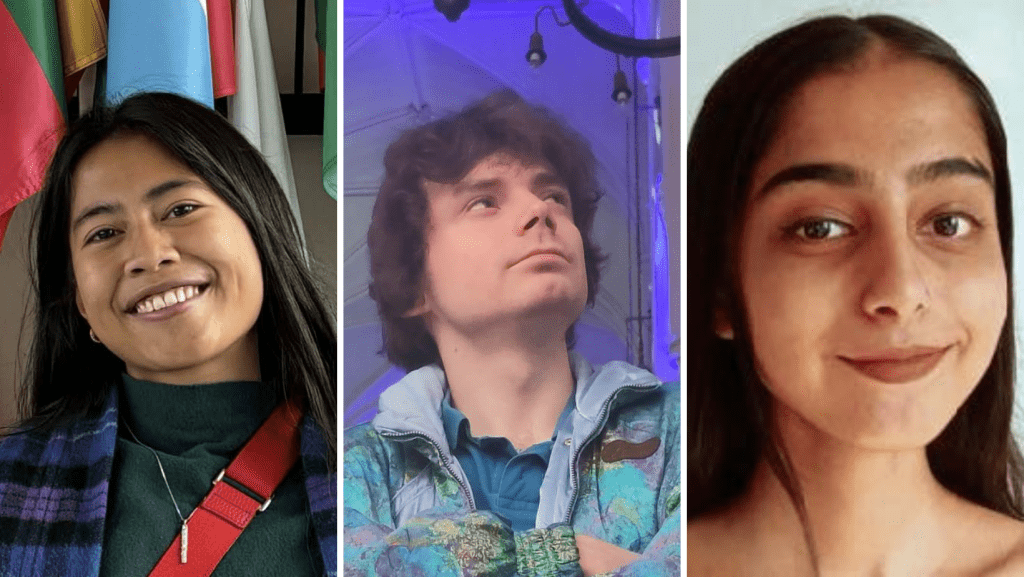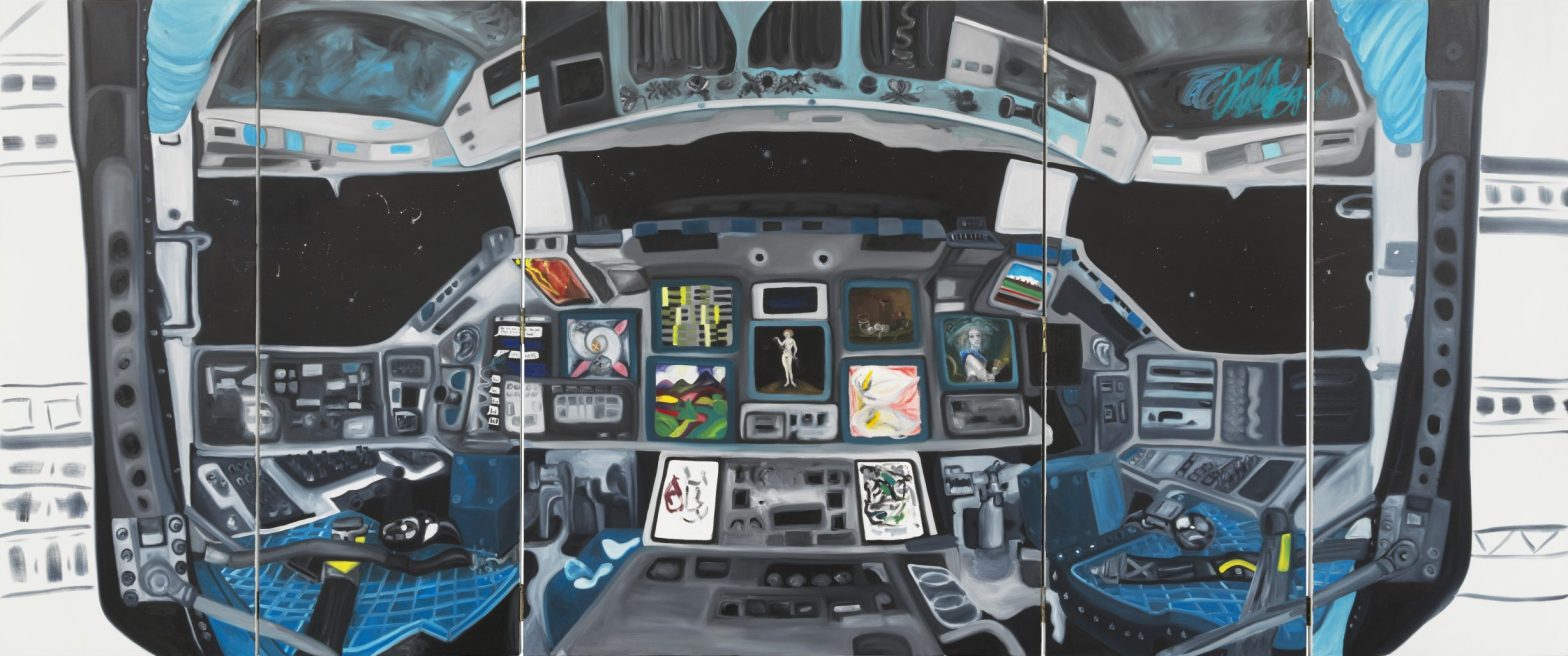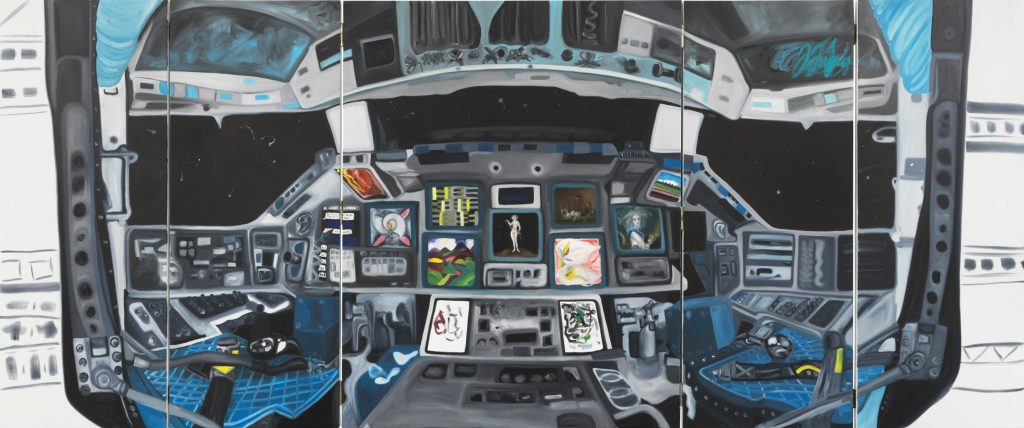How can we celebrate the queer community in outer space? Space Pride, a voluntary non-profit focused on promoting LGBTQIA+ visibility and inclusion within the space sector, is working to answer the question. In this short piece, representatives Rania Djojosugito, Franco Labia and Khushi Shah give a brief introduction to their work, and discuss the opportunities space provides for a new era of radical inclusion.
Outer space is in the dreams of many. As we look upon the stars and envision a future filled with planets, galaxies, and more, our hopes, dreams, and aspirations are often sewn into the fabric of space. As they say – “the sky’s the limit”: endless possibilities can arise from the mere wish upon a star. Nonetheless, this sentiment is yet to be a universal reality, particularly for the LGBTQ+ community that has often contributed to the innovations we see in outer space today. While the exploration and use of outer space has been borne from a sense of international cooperation and mutual acceptance, many who desire to become part of the space dialogue are often left behind, silenced, or excluded entirely from participating. The voices of the queer collective, which could best be described as the amalgamation of countless individuals who do not conform to the heteronormative imaginations of gender and/or sexuality, have been especially vulnerable to the lack of inclusion and empowerment.
A Queer Space
A queer existence is to break the boundaries of a heteronormative society, a reality that places heterosexuality as the pedestal and mainstream form of human relationships and idolises the gender binary as the norm. To be queer, to be visible, to be loud, all flow around the norms of gender and sexual identity and expression. Our very existence challenges people to question their assumptions about themselves and to discover hidden facets of their own identities. When we reflect on the cosmos, the fluid nature of the dynamics within the impossible scale of the universe teaches us that boundaries are not fixed or immobile. As time flows, the boundaries shift, coalesce, and new eras of planetary co-existence dawn.
Great strides are being made globally towards a more diverse and accepting space community, however barriers to creating a “space for all” are still present. Observe the indifference towards criticism of naming the James Webb Space Telescope, whose history is laced with the sanctioning of anti-LGBTQ employment policies during the Lavender Scare, the quashing of pronouns in official virtual meeting IDs for LGBTQ+ employees at NASA GSF Centre, and the existing policies and legislation globally that discriminates against LGBTQ+ individuals. Attitudes across the world surrounding the visibility and inclusion of the LGBTQ+ community have gained traction and prominence, opening opportunities to bring people into previously inaccessible workplaces. Yet following recent reports by organisations such as Deloitte and Ipsos, unease remains rampant amongst LGBTQ+ employees: fears of differential treatment, implications for career opportunities, and concerns for personal safety to name a few.

While we have celebrated the growing visibility and representation of pride celebrations with months dedicated to unpacking the history of LGBTQ+ participation and increased awareness of concepts such as “diversity, equality and inclusion”, archaic remnants of discrimination remain vested in places of authority and positions of leadership and power – the space industry included.
Space has been described by some as an inherently countercultural plane lacking a central gravity field, giving it no orientation. Hence, not only does space reshape how we see the world, it also questions mainstream threads of thinking. Beyond the fluid realities of outer space, individuals from the queer community have equally contributed to the scientific breakthroughs we are working towards. For example, Dr Nergis Mavalvala, a Professor of Physics at MIT, proved the existence of gravitational waves initially theorised by Albert Einstein. Dr Sally Ride, the first American woman to go to space, was posthumously identified as the first known queer astronaut. And planetary astrophysicist and space scientist Dr James Pollack‘s contributions to the study of Mars and Venus were reflected in the naming of a Mars crater (Crater Pollack).
A Dangerous Space
Travelling out into the dusty cosmic planes of the universe, energy ripples through the interstellar medium. Looking back from the destitute, dusty haze of Mars at the fragility of Earth, the planet stands on the brink of a collision-driven shockwave that will wipe out our existence. Zooming into the present day, we are bombarded with imagery of the war in Ukraine, and genocide in Gaza as the world watches without acting. Civilians, women, and children continue to die each day. Space is a dual-use technology, with the sector intrinsically linked to defence, and plays a crucial role in these types of conflict in Ukraine and Gaza through satellite imagery, communications, GPS, and more. To recognise this duality and act is not to collide, but to flow around the fake boundaries that society and the world put upon us. To act is to address the complicity of the space industry in reinforcing these discriminatory boundaries. To act is to find ways for space technologies to further social justice. To act is to create and reform policies and work towards an equitable future. By uniting together across boundaries, humanity can step back from the brink of extinction.
Allyship in Space
While the queer collective is mostly composed of and imagined for those who fall outside of the categorical binary expressions of love and being, it is also an open space for all including allies hoping to equally voice their concerns and hopes for a more diverse future. As such, to be an ally to the queer collective is to be an ally to humanity and its innate curiosity for realities beyond our blue planet. Protecting and advocating for the participation and safety of queer communities encourages new thinking, innovative perspectives, and human empathy. Being an ally is not to be performative or wear a rainbow mask when it is convenient. It is to join queer individuals in their hardships, listen to their concerns, shed light on injustices, and learn from a perspective that may not be reflective of your own. It is to remain curious about changing landscapes and open-minded enough to embrace all humans in their diverse shapes, sizes, colours, genders, orientations and individual identities.
To be an ally is to publicly challenge heteronormative narratives and stereotypes. Activism is a powerful pathway to do so. Artist Frieda Toranzo Jaeger’s work provokes our imagination of how a decolonised and anti-capitalist future could look. These intriguing artworks can help us reclaim our narratives and assert our presence in a patriarchal world. Leveraging art as a tool for social change, queer individuals in the space sector can advocate for policy reforms, organisational inclusivity, and cultural shifts that prioritise LGBTQ+ rights and visibility. Through these efforts we can challenge discrimination, promote diversity, and inspire future generations of LGBTQ+ scientists, lawyers, policymakers, designers, artists, engineers, and astronauts to pursue their passions without fear of prejudice or exclusion.
A Joyful Space
We must not lose sight of our shared humanity. In our universe there exist an infinite number of possibilities for the future. Taking a page from quantum mechanics, humanity exists as a contradiction. The building blocks of humanity on the nanoscale, particles, exist both as a wave and a particle simultaneously. Our very fabric, our being, denies proper definition and a queer existence tears up the boundaries we place on ourselves. To be queer is to have hope. To be queer is to have joy. To be queer is to be free.
Space Pride is an international charity dedicated to celebrating our vibrant LGBTQIA+ community in the global space sector. “We are all made of stardust”. Our vision is for humanity to go into space as one species, of which the queer community is a beautiful, visible and celebrated part.

From left to right:
Rania Djojosugito (she/her), from Indonesia/Austria, is Space Pride’s Social Media and Communications Officer and is a current law PhD researcher at the University of Edinburgh.
Franco Labia (they/them), originally from South Africa, is the President of Space Pride and a PhD researcher at the Bristol Robotics Laboratory.
Khushi Shah (she/they), from India, is the Creative Director of Space Pride and co-founder of Beyond Earthbound.





